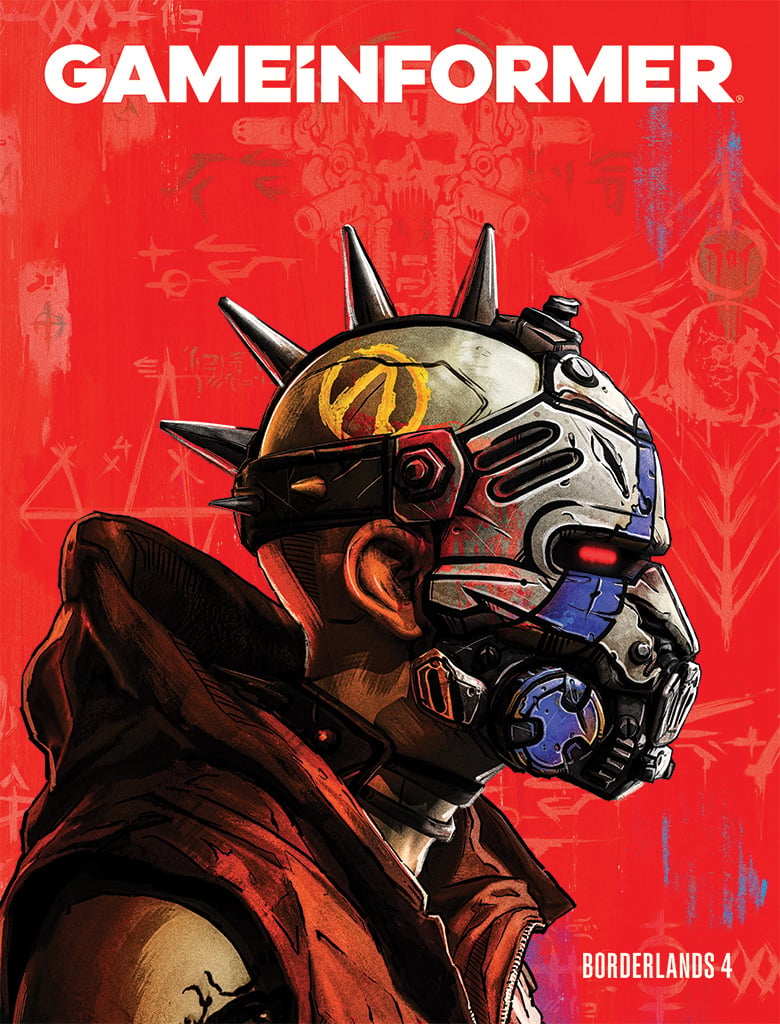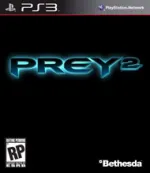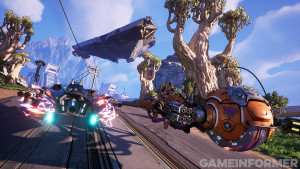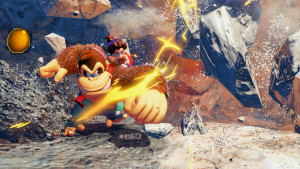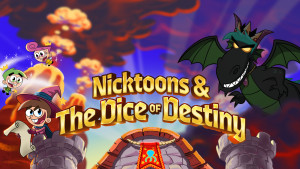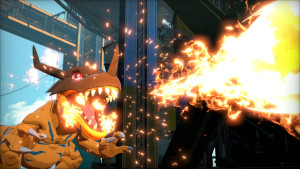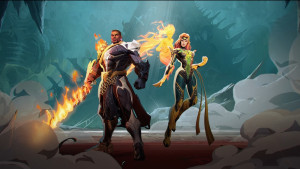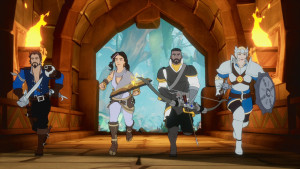Borderlands 4 debut issue is already available for Digital subscriptions. Subscribe Now!
Prey 2

Prey 2 is an ambitious title, and the new direction may seem as alien to fans as Tommy’s apathetic capturers. Despite featuring a new protagonist, new gameplay mechanics, and an entirely new world, Human Head argues that it is still a Prey title at heart.
While spirit-walking, spheres, portals, and plays on gravity are gone, Prey 2 will continue to focus on self-discovery and challenge the player by introducing new FPS mechanics. The goal is also to address a slew of nagging questions, too. Where did the spheres come from? What happened to the humans that were abducted and survived? Where is Tommy?
Regardless
of the drastic departure from a narrative standpoint, the game itself
starts off in a very familiar setting, as per our demo last week. On
July 11, 2006, an unknown force invaded Earth, ripping Tommy and those
close to him from their reservation in Oklahoma. That same night SeaJay
Air Flight 6401, a commercial airliner, was abducted alongside countless
others. More astute Prey fans may remember Tommy stumbling past the
captured craft in the first game.
Prey 2 follows Killian Samuels,
an air marshal on SeaJay 6401. He awakes on the sphere none the wiser
than Tommy, working his way through rubble and burning debris to find
himself gazing upon earth from a most disturbing perspective.
Samuels
pulls out a gun – a luxury afforded to him thanks to his status as an
air marshal – only to be attacked moments later. Instinct takes over and
he chooses fight over flight. Eliminating the first round of hostiles,
Samuels traverses his way toward the burning cockpit of his vessel,
following screams in hopes of finding other survivors.
Reinforcements
halt his progress, requiring even more aggressive tactics. This next
encounter highlights the expanded cover system. Samuels pops in and out
from behind debris, blind firing as needed, or running, jumping, and
sliding to a new vantage point. Armed only with a pistol against
superior technology, Samuels is stunned and staggers to the ground. The
alien creatures close in, tower over him while muttering in their
foreign tongue, and knock him into oblivion.
Time passes, and
the familiar surroundings disappear. Samuels awakens after an
undisclosed amount of time and finds himself acclimated to life on an
alien world called Exodus. It is obvious that he has been a resident for
some time, and more bizarrely, has made a name for himself as a bounty
hunter. With no recollection of the years between the initial abduction
and now, we have as much catching up to do as Samuels does. Like Tommy
before him, Samuels has no grasp of his role in the world, and even
thinks that he may be the only human left. Until he meets Tommy, that
is, who is said to play a substantial role in the sequel.
The
bounty hunter vocation was intentionally chosen by Human Head in an
effort to explore both sides of the predator/prey relationship in the
sequel. Samuels has made a number of friends over the years, but even
more enemies.
We get a first look at Samuels in action in a city
described as “alien noire” in presentation. Exodus is unique in that it
is a tidally locked planet – one side always faces the sun, and another
side never feels its warmth. This Blade Runner-inspired city falls
somewhere in-between the light and dark zones, a vertical playground
perfect to show off Samuel’s new moveset. He is more agile than one may
expect, able to run, jump, vault, grab, shoot, and dive in a parkour-esq
movement system. These augmented abilities will be an imperative part
of the job, necessary for pursuing bounties and surviving the daily
dangers of life as a bounty hunter.
Samuel’s life on this alien
world is much in the hands of the player, as Prey 2 eagerly embraces an
open-world setting. “Player choice” was an oft-repeated phrase during
our demonstration. What missions Samuels accepts, where he travels, what
gadgets he uses, and how he interacts with others is all dependent on
play style. Despite what the genre may dictate, Samuels won’t walk
around sticking a gun in the face of all he passes, either. Rather,
choosing to be aggressive is a deliberate act, and one that will have
repercussions in nearly all facets of the game.
Not wasting any
time, we jump into a mission that highlights both player choice and the
open world nature of the game. Gadgets are core to the bounty hunter
profession, and Human Head promises well over twenty, with double the
upgrades available throughout the campaign. A scanner of some sort
provides an AR layer over the world, similar to Arkham Asylum’s
detective mode. This particular city is home to drug and armament
trades, seedy casinos, and strip clubs. Characters of interest are
highlighted throughout the environment, and considering the shady
populace, many opportunities for interactions become available. This is a
good place to be a bounty hunter.[PageBrake]

We
choose to walk by a small alien being accosted by a pair of larger
thugs, although we could stop if in the right mood. Instead, we decide
to go after a bounty that popped up on our scanner. Traversing upwards
toward his location, we find the hit in a strip club. Preoccupied by the
entertainment, we have a moment to make a decision. This particular
target is wanted dead or alive, but we’re not keen on risking the lives
of innocents by opening fire in such a crowded space. Instead, we close
the gap and threaten him, optimistic that he will surrender of his own
free will. The tactic doesn’t work, and he bolts. These sort of “ambient
bounties” – ones that are not core to the narrative and instead are
stumbled upon – are never defined. The hit could try to bribe you,
surrender, open fire, or run, as this particular alien opted to do.
We
pursue the bounty, but not for long. He forfeited a peaceful surrender,
and his life, by running. A few carefully placed bullets take him down,
and we collect our reward before looting his body for another cash
bonus.
This might not have been the most honest outcome, but it
is a viable one. Prey 2 employs a morality system that will dictate how
characters react to the player, but isn’t far-reaching enough that it
will change the outcome of the game. You can choose to randomly kill
civilians and mug innocents if you like, but expect the enigmatic law
enforcement agency to come down on you. The “eye in the sky” drones are
particularly troublesome, as they won’t stop seeking you out till you
destroy them. Another gadget – the shoulder-mounted rocket – comes in
handy during such situations.
Making questionable moral choices
may benefit you by eliciting information from civilians and making it
easier to score cash, but will also influence the type of missions that
are available to you. Good or bad, your reputation will precede you.
Maintaining an honorable demeanor will have its advantages, too,
especially with vendors. Either way you decide to play, the city is very
much alive, and you will find opportunities to help or hinder others
around every bend. At one point in time we picked up on a DNA trail,
which can be used for tracking or investigative purposes. The trail led
us to a group of aliens shaking down a lone figure. We dispatched of the
mob quickly, taking advantage of an anti-gravity gadget to pull them up
and out of cover. The ambushed alien thanks us with some cold cash.
An
official bounty comes through the wire, delivered by an AI companion of
unknown origins. We know little about her, or who created her. What we
do know is that a Mafia-esq boss is waiting to be taken down. The hit’s
location isn’t known, so our visor instead sets a waypoint for a
well-known informant.
An ambush unfolds on the way to the
informant, once again highlighting the fast and fluid combat. Moving
from cover to cover is encouraged. The shoulder mounted rockets come in
handy, making quick work of the foes before moving onto higher grounds
to intersect the informant.
Turns out the informant isn’t very
talkative, offering to loose his lips for double his standard rate. We
could pay, but aren’t feeling generous, and instead opt to push his
bodyguard over a railing and to his death. The informant isn’t happy
about our action, but knows he is bested for the time being. He gives us
the information we need, but makes known that he will be calling in a
favor in the near future, most likely painting him as a mission giver
later in the game.
The bounty’s current location is now updated
on our map. Using yet another gadget – hover boots – we glide down from
our lofty position, gaining ground quickly. Since environments are
spacious and often vertical, this gadget in particular will be used
heavily.
Before entering the building that houses the hit, we
stock up on grenades from a nearby vendor. The visor provides a plethora
of information, and we take the bounty’s unsuspecting lieutenant
hostage before entering the building. We could have killed him on the
spot, but the practical application he offered was much more appealing.
His purpose is quickly negated, however, as the hit dispenses of him
with one clean blow. So much for loyalty.
Another chase unfolds,
but this one is infinitely more interesting. The target can teleport,
making it much more challenging to keep taps on him through the waves of
aggressive bodyguards. He also drops bombs at regular intervals.
Crossing
a large portion of the city in the pursuit, and we swap between
traditional firearms and the alternate fire of the shoulder rockets to
try and slow him down. At one point, he even has us train-hopping,
carefully timing jumps to avoid being flattened on the tracks below.
Eventually
we capture him, as this bounty is wanted alive. He, like many before
him, tries to offer us a deal by doubling the amount on his head. We
could take the offer, but remain virtuous instead and send him along for
collection. One more option presents itself before we part ways –
interrogation. Interrogation can yield information about the narrative,
loot locations, and other hits. Problem is, each individual
interrogation risks killing the bounty. Not willing to chance it, we
warp him away and wash our hands of the situation.
The AI liaison
chips in our ear, a hint of urgency in her voice. She warns of a
familiar face coming our way, and just as one encounter ends another
begins. A massive four-legged beasts rages into the plaza, accusing
Samuels of betrayal and spouting words of vengeance before the screen
fades to black.
So far, the small taste of Prey 2 we’ve had is
appealing, but we’re interested to see if the somewhat abstract concept
of self-discovery and the alien setting is enough to make Prey 2 feel
like a direct sequel. We’ll find out more over the coming months as the
press rollout continues.
Prey 2 is slated for release in an undisclosed window of 2012 for the Xbox 360, PlayStation 3 and PC.
